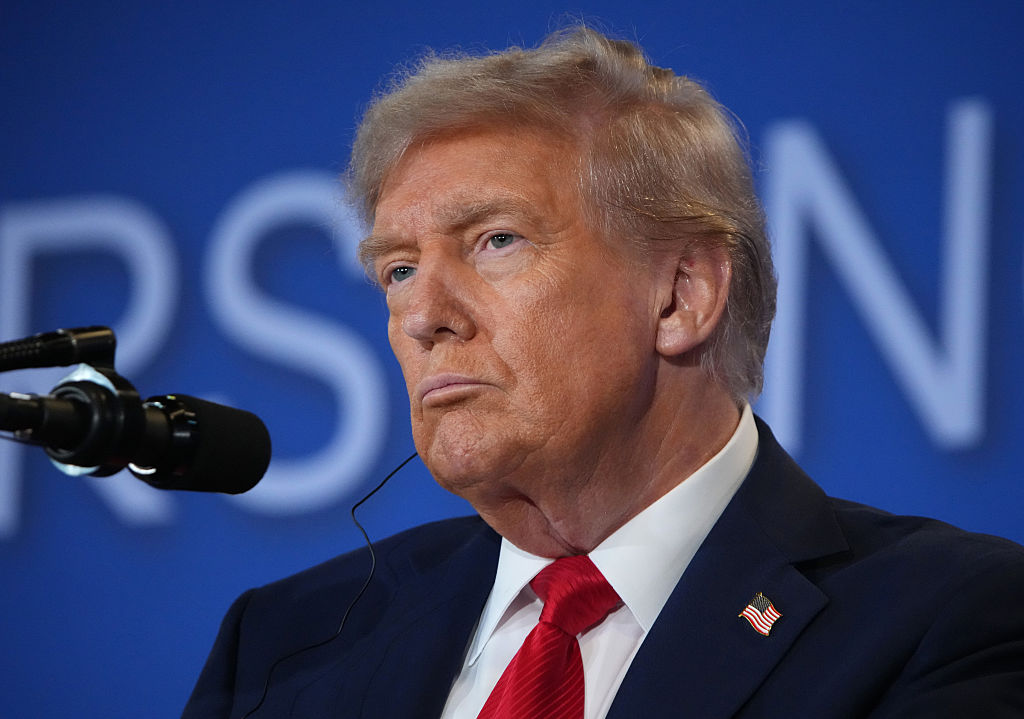
President Donald Trump fired Federal Reserve Governor Lisa Cook this week. In an Aug. 25 letter posted on Truth Social, the president terminated Cook “for cause,” citing mortgage fraud allegations recently presented by Bill Pulte, head of the Federal Housing Finance Agency. Despite Cook not being found guilty of anything, the accusation was enough for Trump to remove the Joe Biden-appointed official from her position. A legal battle will commence, the political fallout will persist, and the financial markets will prepare for an era of lower interest rates.
Mortgage Fraud at the Federal Reserve?
Pulte, taking to X, shared a criminal referral letter he sent to Attorney General Pam Bondi. In the contents, he alleged that Cook claimed two residential properties (one in Ann Arbor, MI, and the other in Atlanta, GA) as her primary residence on mortgage applications in 2021. She later listed her Atlanta home for rent, according to Pulte. The objective, he said, was to secure better loan terms, such as lower interest rates and more lenient lending standards.
The allegation was enough for Trump to threaten to fire Cook if she did not resign. When it became clear that Cook would not voluntarily step away from the job, Trump became the first sitting president to say “you’re fired” to a member of the Fed Board of Governors.
“In light of your deceitful and potentially criminal conduct in a financial matter, [the American people] cannot and I do not have such confidence in your integrity,” wrote Trump in the letter to Cook. She shot back, saying in a statement that the president “has no authority to do so,” and therefore, she will not step down from her role. “I will continue to carry out my duties to help the American economy as I have been doing since 2022.” Cook’s term will last until 2038.
Her attorney, Abbe David Lowell, confirmed they will pursue a legal challenge. Experts say this will likely end up in the Supreme Court regarding the Federal Reserve Act, a case that will probably focus on Section 10, which states a president can terminate a member of the Fed Board of Governors “for cause.” Whatever happens, Trump says he will abide by the court’s decision.
Critics say this is about overhauling the central bank. But Treasury Secretary Scott Bessent, during the marathon Aug. 26 Cabinet meeting, asserted that the White House wants to restore public trust in the Eccles Building. “The old ways of doing things are not good enough,” he said.
Ultimately, perhaps it is a bit of both.
Trumponomics Goes to the Eccles Building
For months, the president, senior administration officials, and allies in the press have lambasted Fed Chair Jerome Powell and the Board of Governors. From Trump’s nicknames for Powell to calls for regime change, the next several months present an opportunity to perform a makeover – one that is perhaps less expensive than the almost decade-long remodeling at the headquarters.
By next year at this time, the US central bank could become an extension of Mar-a-Lago.
Today, Trump has two appointees at the institution: Fed Governor Christopher Waller and Fed Vice Chair for Supervision Michelle Bowman. These are the two individuals who dissented at the July 12-member Federal Open Market Committee (FOMC) policy meeting, voting to cut interest rates amid concerns surrounding a deteriorating labor market.
Earlier this month, Fed Governor Adriana Kugler, a temporary replacement for the outgoing Lael Brainard, abruptly resigned from her position, months before it was set to expire. She said she would return to teaching. Days later, the current administration appointed Council of Economic Advisers Stephen Miran, who has advocated for restarting the entity’s easing cycle, to the position.
Powell, meanwhile, will see his wild two-term leadership expire in May 2026. The White House is in the middle of selecting Powell’s successor. The initial list was small, with Kevin Warsh seen as the top contender. However, it has grown in recent weeks, with everyone from National Economic Council Director Kevin Hassett to Fed Vice Chair Philip Jefferson. Still, according to betting website Polymarket, Waller is the heavy favorite to be the next head of the Fed.
And now all eyes are on Cook.
This year, she has supported maintaining the current target federal funds rate in a range of 4.25% to 4.5%, advocating a wait-and-see approach before taking action. Like her boss and many of her colleagues, Cook worries that the president’s tariffs will rekindle the inflation flame. “As I consider the appropriate path of monetary policy, I will carefully consider how to balance our dual mandate, and I will take into account the fact that price stability is essential for achieving long periods of strong labor market conditions,” Cook said in a June speech at the Council on Foreign Relations.
Whether her termination will be held up in court remains to be seen. In recent years, even the slightest scrutiny has been enough to prompt Fed officials to step down from their roles. In 2021, Dallas Fed President Robert Kaplan resigned over a potential conflict of interest regarding personal stock trading throughout the pandemic. Shortly after, Boston Fed President Eric Rosengren resigned amid criticisms for holding stakes in real estate investment trusts during the public health crisis. Fed Vice Chair Richard Clarida left the organization a year later amid investments in the US stock market.
The situation at the Federal Reserve has turned into a soap opera.
Lower Interest Rates
Following Powell’s remarks at the Jackson Hole Economic Symposium and the disastrous July jobs report, Wall Street overwhelmingly expects the Fed to lower interest rates at the September policy meeting. But what about after? If tariff-driven inflation intensifies heading into 2026, the central bank may be compelled to pause its easing cycle again and maintain rates at a higher level for an extended period, allowing it to reassess economic conditions once more.
The question becomes: Will the monetary authorities follow the data or heed President Trump?

















